The Cognitive Athlete: Undulating Periodization
Undulating periodization is a training model that emphasizes the regular and systematic variation of intensity and volume within short cycles, either daily or weekly.

Undulating periodization is a training model that emphasizes the regular and systematic variation of intensity and volume within short cycles, either daily or weekly. Contrary to traditional models, which might emphasize a linear progression or consistent phases of training, undulating periodization introduces waves of training intensities.
Dynamic Adaptation: By constantly fluctuating the intensity and volume, athletes are perpetually adapting. This ensures they don't hit plateaus or get too comfortable in their routine.
Diverse Stimulus: Athletes receive both high-intensity, low-volume training and low-intensity, high-volume training within a short period. This varied stimulus can foster multifaceted development, both physically and mentally.
Micro-cycles: These are short, frequently changing cycles (often weekly or daily) that provide a mix of intensity and volume. This offers the athlete a chance to recover and adapt quicker than longer cycles.
The Art of Shaping Training Variables in Undulating Periodization
For undulating periodization to be effective, understanding and manipulating the core variables of training is essential. Here are insights on fine-tuning the stimulus.
Manipulating Task Intensity:
- Definition: Task intensity refers to the degree of effort or cognitive strain involved in a specific cognitive task or training session.
- Application in Undulating Periodization: The intensity of workouts or cognitive tasks can vary either daily (DUP) or weekly (WUP). For instance, an athlete may engage in high-intensity tasks early in the week and taper to moderate or low intensity towards the end.
- Benefits: Such variation challenges athletes differently each time, enhancing their cognitive and physical resilience. The constant change can lead to improved decision-making, faster reaction times, and better overall performance.
It isn't merely a matter of high versus low intensity; it's about grasping the cognitive strain a task places on an athlete. Within the realm of undulating periodization, intensity isn't fixed. Purposeful fluctuations between intensities aim to emulate the unpredictable demands of real-world sports. Consider a soccer player: they might confront high-intensity scenarios during a pivotal match segment and experience more moderate moments during routine plays. Training needs to echo these variances.
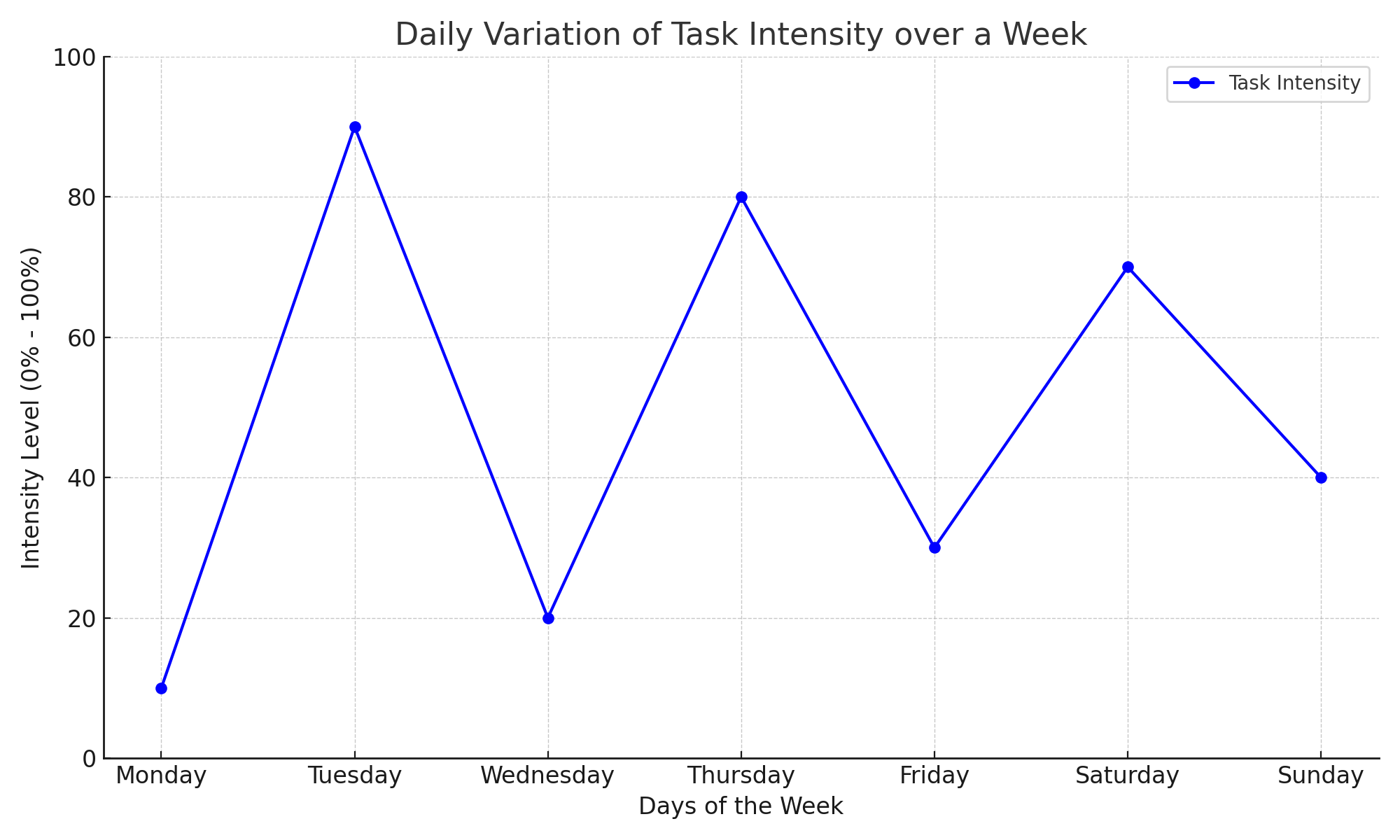
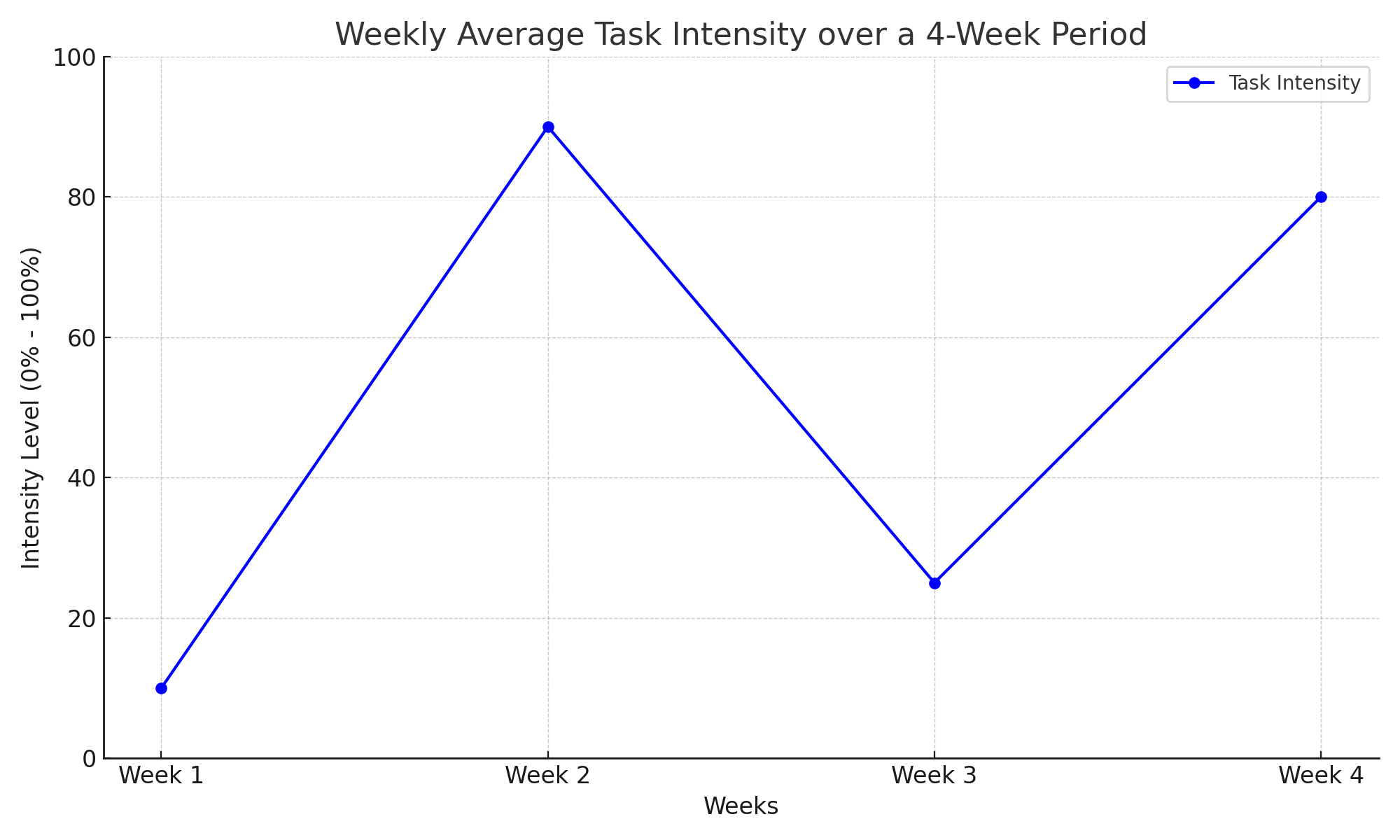
Modifying Task or Session Duration:
- Definition: Task/session duration pertains to the length of time an athlete spends on a particular cognitive task or training session.
- Application in Undulating Periodization: The duration of a specific task or the number of tasks can be altered frequently. Athletes might tackle longer sessions one day and shorter, more intense ones the next.
- Benefits: This constant change ensures athletes don’t stagnate with a set routine. The flexibility in duration enhances cognitive adaptability, especially in sports requiring prolonged concentration or quick switches in attention.
Duration is more than a mere measure of time; it signifies an athlete's endurance and focus. In the world of sports, some moments elongate, as seen during a heated tennis rally, while others are fleeting, like a swift basketball counterattack. Undulating periodization captures this ebb and flow. Through the consistent alteration of task durations or their frequencies, athletes gear up for both the prolonged challenges and quick sprints in their respective sports, refining their aptitude to adapt on the fly.
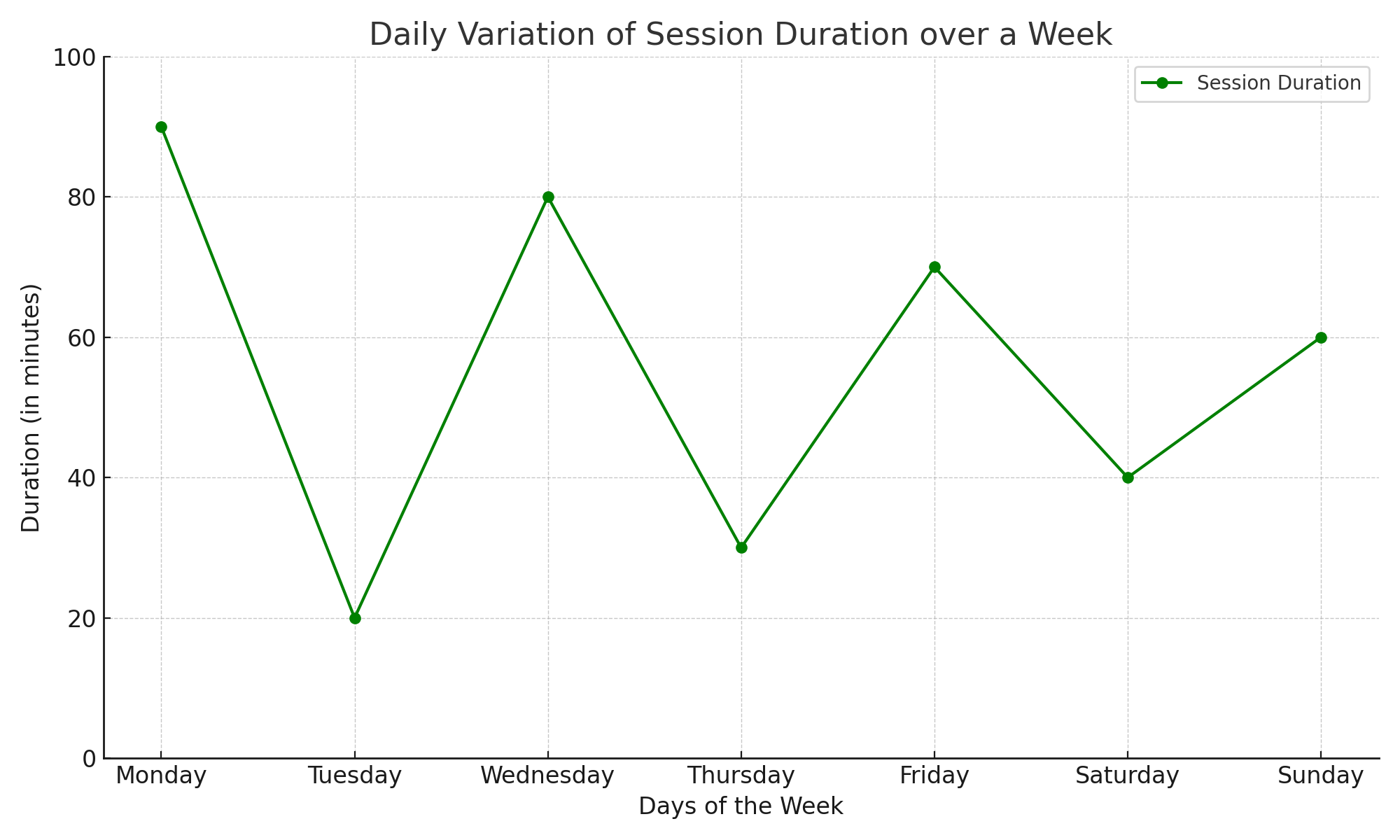
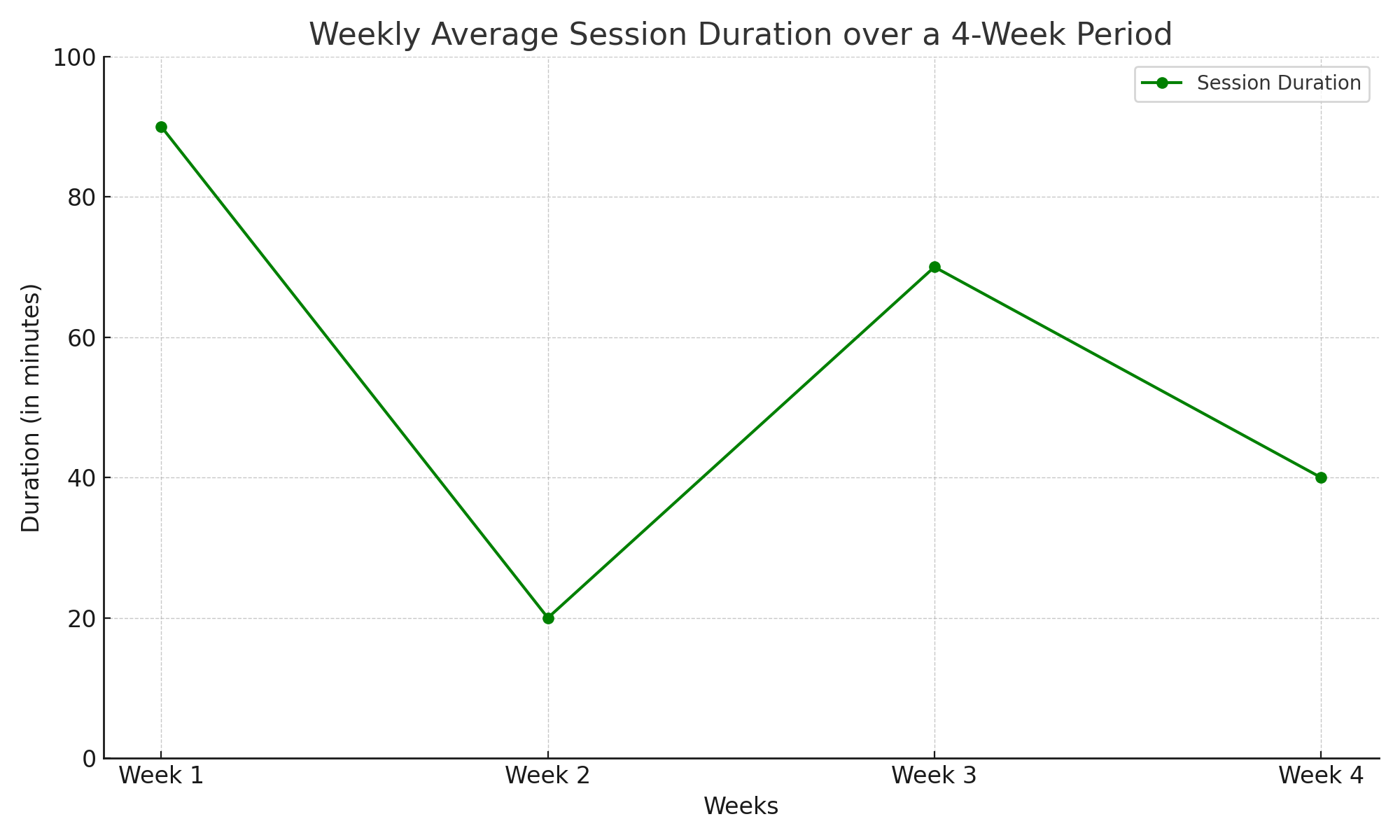
Switching Task Frequency:
- Definition: Task frequency concerns how often specific workouts or cognitive training sessions occur.
- Application in Undulating Periodization: The number of training sessions can be changed week-by-week. Some weeks may be packed with sessions, while others might offer more days of rest and recovery.
- Benefits: Such variations ensure athletes remain sharp and adaptable. Increasing session frequency can intensify cognitive training, while decreasing it offers vital recovery time, reducing the risk of mental fatigue or burnout.
It isn't solely about the frequency but also about discerning the rationale behind it. Some weeks are intentionally dense, designed to bolster cognitive endurance and mirroring situations where athletes may grapple with consecutive challenges. On the other hand, less intense weeks mirror phases of decreased exertion, underscoring the value of recuperation and tactical planning.
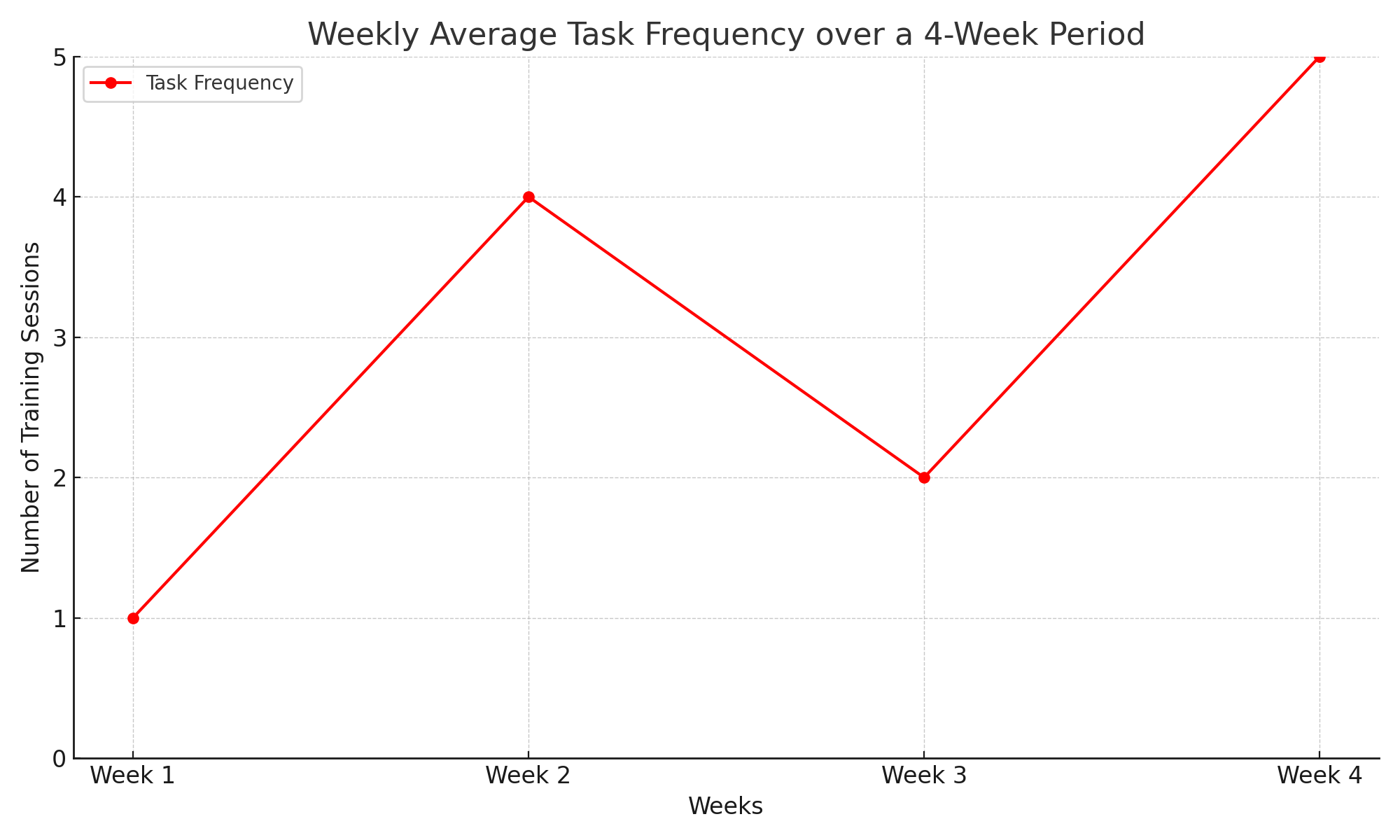
Managing Mental Fatigue: The Role of the PVT-B Test
Cognitive training is not just about increasing the load; it's equally vital to monitor the repercussions of this intensified training on the athlete's mental state. Enter the PVT-B test—a crucial tool to assess and manage mental fatigue.
Gauging Mental States with PVT-B:
By administering the PVT-B test both pre and post-training sessions, we can derive crucial insights into the athlete's level of mental fatigue. This feedback facilitates real-time adjustments to the cognitive training intensity, ensuring that the athlete is neither under-stimulated nor pushed to the brink of burnout.
- The blue line delineates the consistent pre-training reaction time over the 10 days, signifying the athlete's mental state at the onset of each session.
- The dashed red line tracks the post-training reaction times, which vary depending on the cognitive load exerted during each session.
This visualization reinforces the idea that the PVT-B test, when administered both pre and post-training, offers a clear insight into the athlete's level of mental fatigue. Such data is invaluable for making real-time adjustments to the cognitive training intensity.
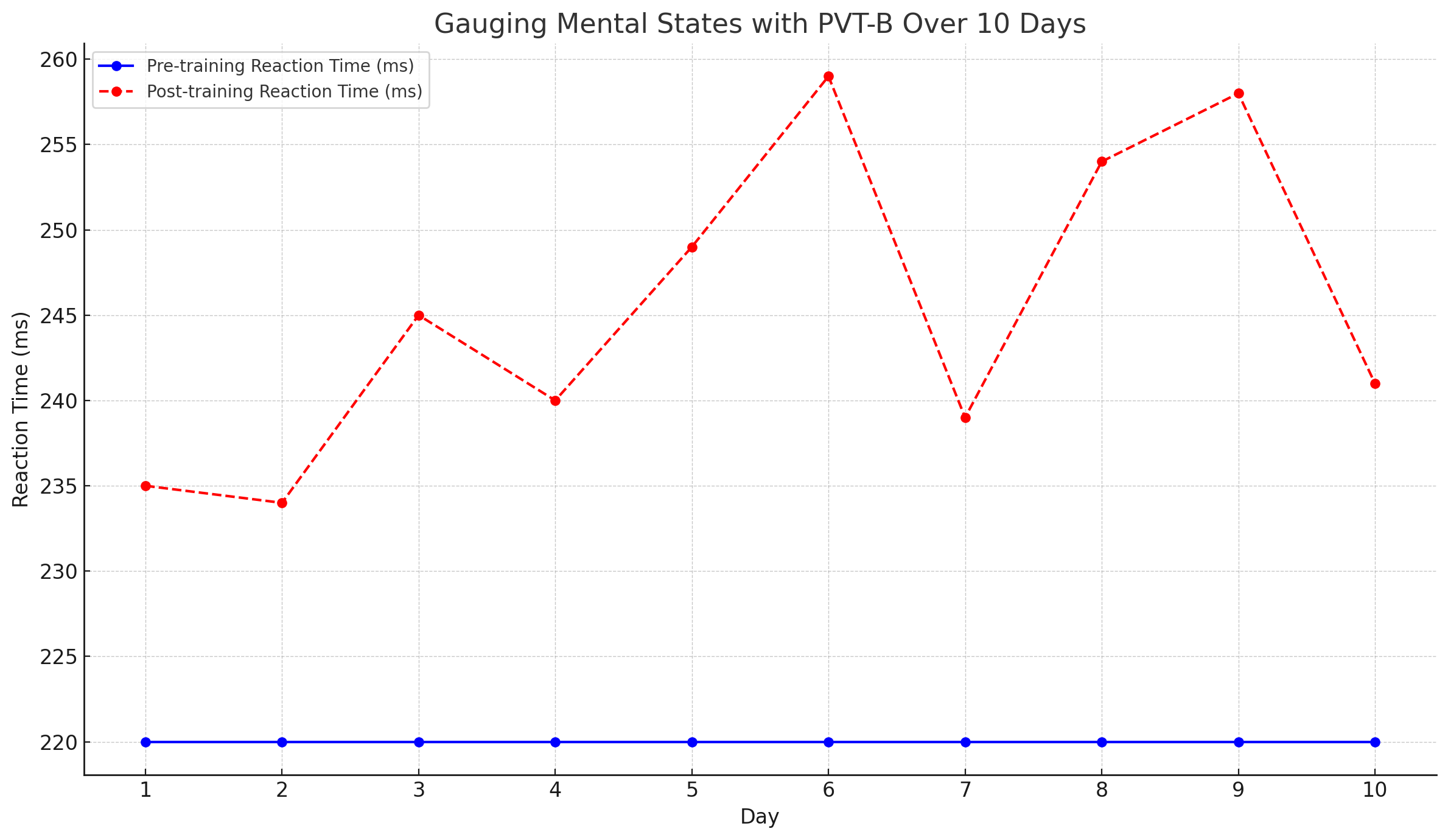
Decoding the PVT-B Metrics:
Interpreting PVT-B results is a nuanced process. Indicators such as prolonged reaction times, heightened variability in responses, or an uptick in lapses (specifically reactions surpassing 355ms) signify burgeoning mental fatigue. By vigilantly monitoring these markers, we can calibrate the cognitive training load, striking a perfect balance between challenge and overexertion.
- The blue line illustrates the variability in reaction times post-training over the 10 days. Reaction time variability serves as an indication of an athlete's consistency in responding to cognitive challenges.
- The red line maps out the number of lapses observed during each session. Lapses, especially those exceeding 355ms, act as a direct indicator of mental fatigue.
- Together, these metrics offer a comprehensive view of the cognitive strain experienced by an athlete during each session. By closely monitoring such indicators, coaches can tailor the cognitive training load to ensure optimal challenge without pushing the athlete into excessive fatigue.
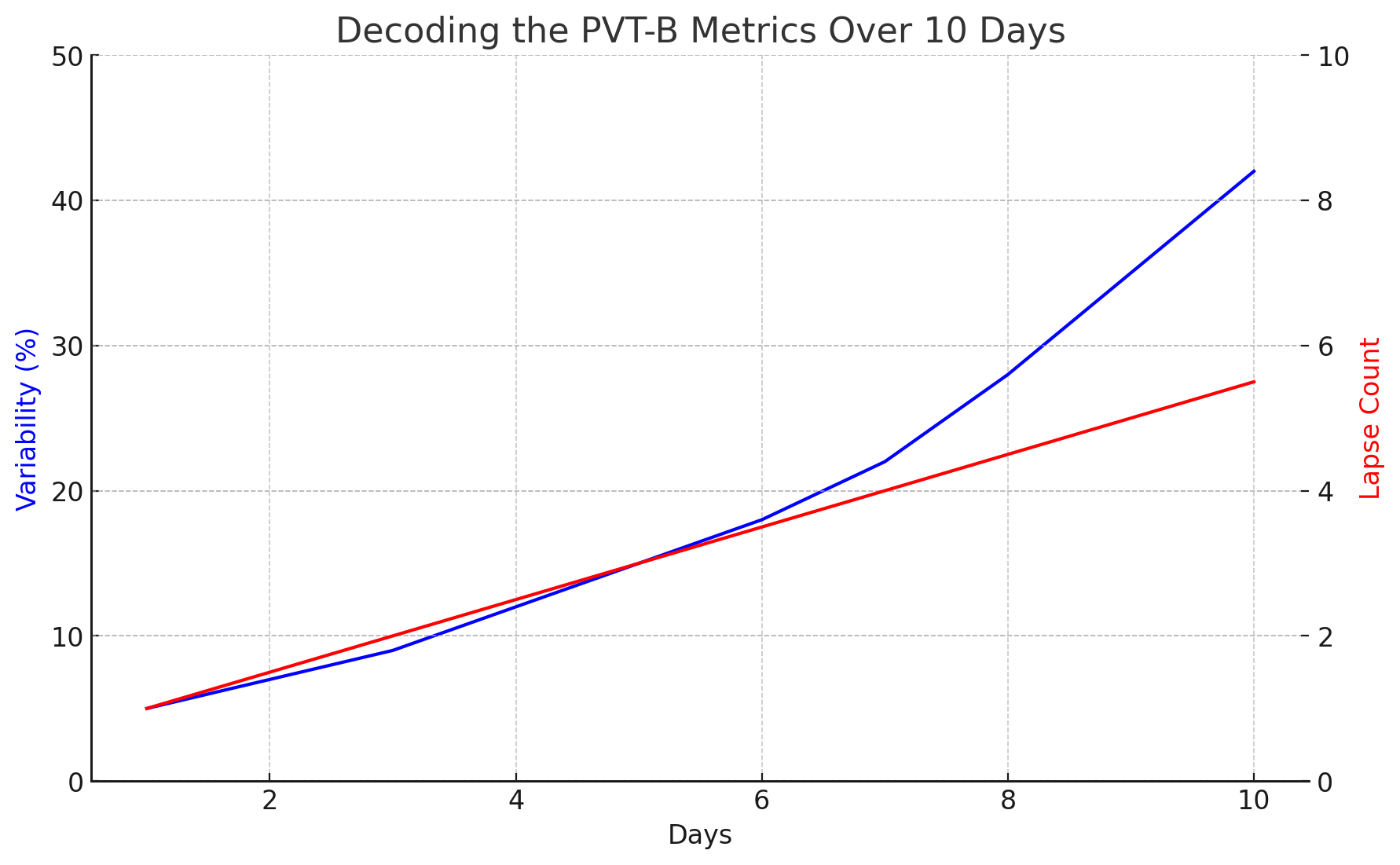
Striking the Right Balance:
The feedback derived from the PVT-B test is pivotal in assessing the cognitive load's impact on athletes. A noticeable surge in lapses or dwindling reaction speeds post-training accentuates the session's efficacy in taxing the athlete's cognitive faculties—provided there's a structured recovery plan in place.
- The blue line tracks the post-session reaction times across the 10 days, highlighting the changes in cognitive speed post-training.
- The red line quantifies the increase in lapses during each session. An uptick in lapses post-training can be a marker for the cognitive load's impact on the athlete.
The divergence between pre-session and post-session metrics, such as reaction times and lapses, illuminates the strain exerted on the athlete's brain during each session. It underscores the importance of balancing cognitive challenges with structured recovery to ensure sustained growth and prevent burnout.
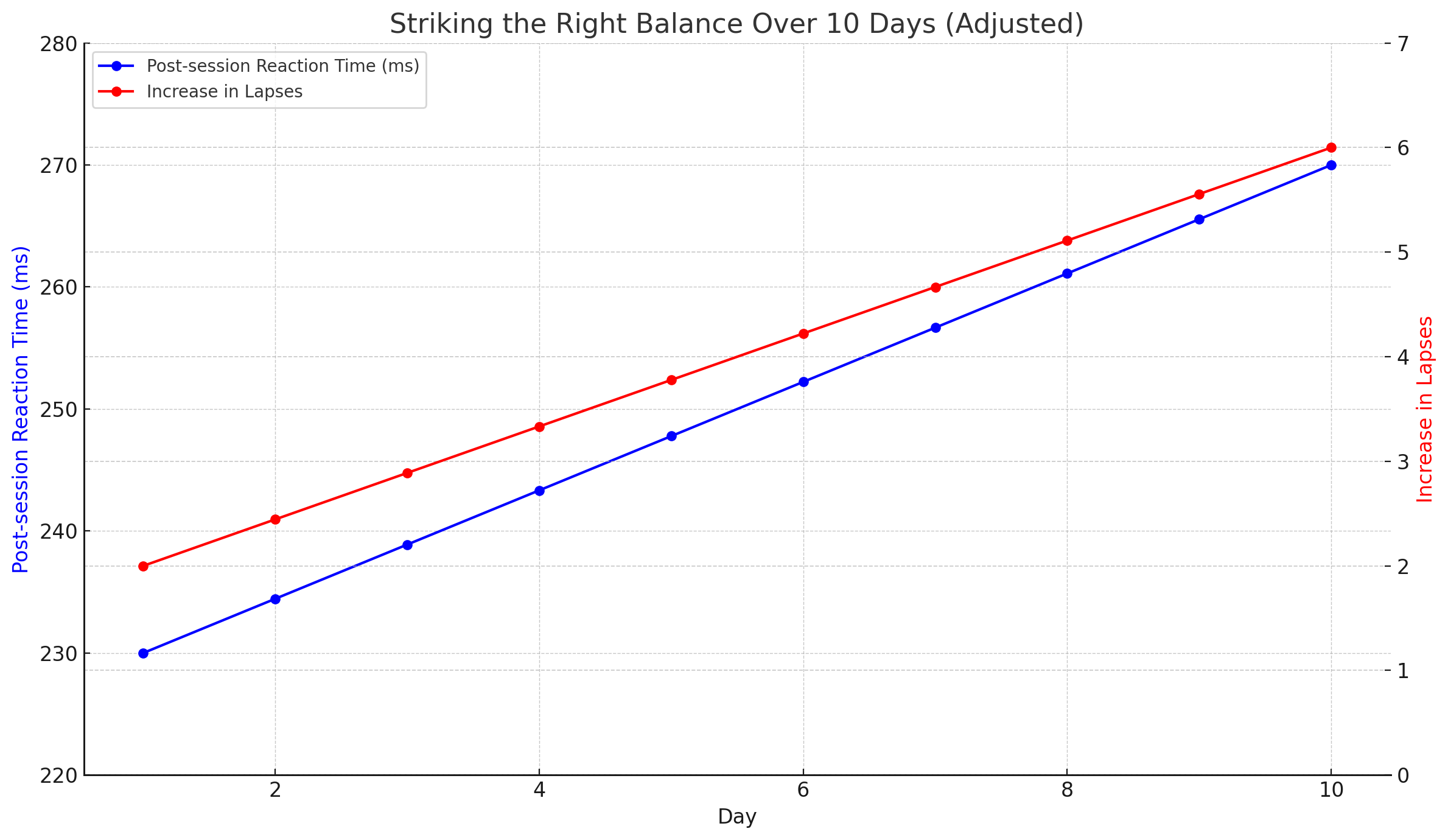
Undulating periodization serves as a powerful training model, particularly beneficial for the cognitive development of athletes. By integrating systematic variations in intensity, volume, and frequency, this approach offers a diverse and adaptable training regimen. Not only does it prevent stagnation by constantly challenging athletes, but it also sharpens the brain, equipping them to handle the unpredictable ebb and flow of real-world sports.
🌐 Connect With Us
🌍 Soma Technologies: Engineered to enhance human performance.
📸 Instagram: Dive into our world through exclusive photos and stories.
👥 Facebook: Join our community for the latest updates and discussions.
📈 LinkedIn: Connect with us professionally and stay informed about industry news.
🎥 YouTube: Watch our latest videos, tutorials.
🐦 X: Follow us for instant updates, news, and engaging tweets.
